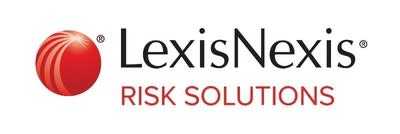Every Dollar Lost to a Fraudster Costs North America's Financial Institutions $4.41 According to LexisNexis True Cost of Fraud Study from LexisNexis Risk Solutions
U.S. investment firms and credit lenders see a 9% year-over-year increase in the financial impact of fraud
Scams comprise 35% of fraud losses for organizations in North America
Fraud makes it more difficult for 79% of respondents to win consumer trust
ATLANTA, April 24, 2024 /PRNewswire/ -- LexisNexis® Risk Solutions unveiled the findings of the seventh edition of its annual LexisNexis® True Cost of Fraud™ Study: Financial Services and Lending Report — U.S. and Canada Edition. The report, based on a commissioned study conducted by Forrester Consulting, reveals 63% of financial firms reported an overall fraud increase of at least 6% within a 12-month period, with digital channels accounting for half of the overall fraud losses.
The LexisNexis Fraud Multiplier™ variable increased for all financial services segments in the U.S. and Canada, with greater increases for firms in Canada, which now lose nearly an extra dollar for every $1 of fraud loss compared to last year: $4.45 in 2023 versus $3.49 in 2022, representing a 28% increase on average. U.S. investment firms and credit lenders reported a 9% year-over-year increase, which was notably higher than U.S. banks and mortgage lenders.
Fraud losses in the phone channel also spiked across the industry, aligning with widespread increases in scam attacks and losses due to scams. While these costs to financial institutions include fines, fees and the effort spent on investigating fraudulent transactions, they do not factor in the negative impact on the customer experience of implementing stricter fraud prevention measures. A significant 79% of respondents acknowledged a negative impact of fraud on customer trust.
Organizations encounter thousands of fraudulent transactions monthly. Fraudsters, seeking to overwhelm companies during the account creation process, persist in automating criminal activities with technology, making it increasingly challenging for businesses to manage the scale and speed of attacks. The unpredictable and multi-faceted nature of threats compel businesses to adopt a multi-layered approach to mitigating fraud risk across the customer journey, or they risk increased financial loss and customer frustration.
"New forms of fraud elevate the risk of loss for both financial institutions and their customers," said Kimberly Sutherland, vice president, fraud and identity strategy, LexisNexis Risk Solutions. "Our study shows that organizations are facing challenges in combatting fraud from international transactions and scams, despite efforts to educate consumers. Across industries, geographies and customer journey stages, firms have implemented more advanced identity authentication and transaction verification solutions, especially behavioral intelligence, device identification, physical biometrics and browser tracking solutions. Firms using a multi-layered, risk-based solutions approach have a lower cost of fraud and fewer challenges across each customer journey stage."
Key Findings from the True Cost of Fraud Study™: Financial Services and Lending
Increasingly Sophisticated Fraud Methods: Criminals continuously develop and refine more sophisticated fraud methods such as scams and synthetic identities to circumvent anti-fraud tools. Scams now account for approximately 35% of fraud losses in the U.S. and Canada, even though almost half (48%) of financial institutions report undertaking efforts to educate customers about protecting themselves. Additionally, synthetic identity fraud is now the most common fraud type in the financial services sector, surpassing third-party identity fraud, including identity theft.
The Customer Experience: Fraud significantly affects how customers perceive and interact with businesses, with more than three-quarters of respondents reporting that customer satisfaction has been negatively affected. In the long term, this also results in customer churn and damages reputation and the company's bottom line.
Increased Digitalization Creates More Opportunity: Although approximately two-thirds of revenue comes through remote channels, physical branches generate the most revenue of any channel. The use of traditional transaction methods such as cash, checks and gift cards rebounded, doubling for U.S. firms and more than tripling in Canada. This increase reinforces the importance of omnichannel identity verification and fraud risk assessment strategies.
Need for Best Practices: Given the rising threat of fraud and cybersecurity risks, organizations should implement a range of integrated fraud solutions that assess physical identity, digital identity and transaction risk. This involves:
Combining a risk-based and data-driven approach to fraud management
Balancing fraud management effectiveness and customer experience
Leveraging the capabilities of cutting-edge technologies like artificial intelligence, machine learning and biometric- and behavior-based authentication methods.
Download the LexisNexis True Cost of Fraud Study: Financial Services and Lending – 2023.
Methodology: The True Cost of Fraud Study conducted a survey of 346 risk and fraud executives in financial services and lending companies in the U.S. (272) and Canada (74). Data collection and survey questions reference a 12-month period. The study provides organizations with data and analysis to understand the current state of fraud and the challenges associated with digital payments in emerging markets. This information comes from a commissioned study conducted by Forrester Consulting on behalf of LexisNexis Risk Solutions in August 2023.
About LexisNexis Risk Solutions
LexisNexis® Risk Solutions harnesses the power of data, sophisticated analytics platforms and technology solutions to provide insights that help businesses across multiple industries and governmental entities reduce risk and improve decisions to benefit people around the globe. Headquartered in metro Atlanta, Georgia, we have offices throughout the world and are part of RELX (LSE: REL/NYSE: RELX), a global provider of information-based analytics and decision tools for professional and business customers. For more information, please visit risk.lexisnexis.com and www.relx.com.
Media Contact:
Ade O'Connor
+44 7890 918 264
ade.o'connor@lexisnexisrisk.com

View original content to download multimedia:https://www.prnewswire.com/news-releases/every-dollar-lost-to-a-fraudster-costs-north-americas-financial-institutions-4-41-according-to-lexisnexis-true-cost-of-fraud-study-from-lexisnexis-risk-solutions-302121998.html
SOURCE LexisNexis Risk Solutions

 Yahoo Finance
Yahoo Finance 
